For creative professionals such as illustrators, designers, and architects, translating inspiration into work is not only a mental challenge but also an endurance race against time.
When inspiration strikes, focus often lasts for hours, but few realize: every forward lean is an overdraft on their health capital.
Medical research shows:
- Prolonged forward leaning increases lumbar spine pressure by 1.5 times compared to an upright posture;
- Long-term forward bending of the neck leads to loss of cervical curvature;
- Shoulder muscles remain constantly tense, forming typical “creative strain.”

The secret to efficient creation lies not only in inspiration but also in the scientific alignment of posture and desk height: 【Tilt + Height Adjustment】 is the optimal balance Aoke has found for comfort and efficiency in the creative industry.
Rethinking “Us”
For a long time, artistic creation has been regarded as an absolutely autonomous field, with artists and curators at the center of art production. Engaging in creative artistic practices often requires long hours of desk work, sustained high-intensity eye use, and maintaining a sedentary posture. These occupational characteristics make them prone to a series of health issues related to their work style.
I. Health Challenges for Creative Professionals
1.Prolonged Sitting and Forward Leaning
Professions such as illustrators, designers, and architects rely on long hours of desk work. The intense concentration during bursts of inspiration often leaves the body “forgotten” in fixed postures—leaning forward, head down, and shoulders and neck tense.
2.The Underestimated “Cumulative Effect”
Occupational posture issues stem from daily minor imbalances in tension. The sustainability of artistic creation is closely tied to the body’s endurance:
When chronic pain begins to interfere with focus, or declining vision limits creative mediums, health issues escalate from personal concerns to professional crises.
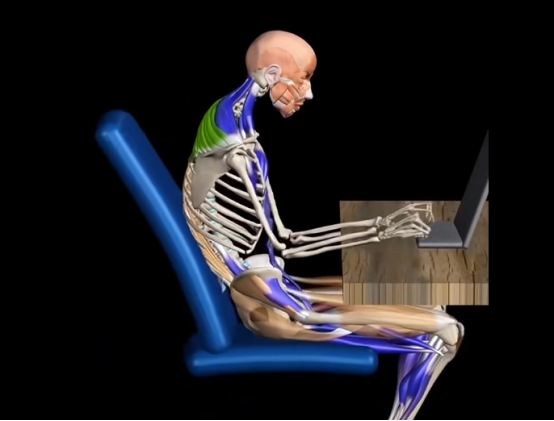
II. Optimization Strategies from an Ergonomics Perspective
· Importance of Height Adjustment
Matching desk height to the user’s height and type of work can significantly reduce lower back pressure. Ergonomics research indicates that alternating between sitting and standing is highly effective in improving blood circulation, thereby sustaining longer creative sessions.
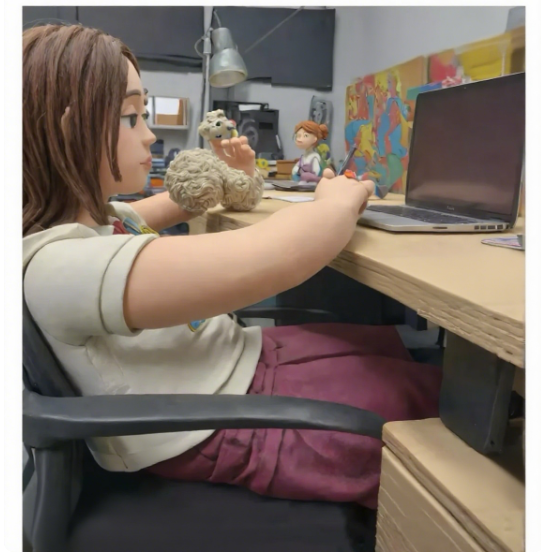
· Role of Desk Tilt
For tasks requiring close-range precision, such as painting, drafting, and writing, a 15°-30° desk tilt can:
1.Protect the Cervical Spine: Reduce forward head posture, allowing the line of sight to naturally perpendicular to the work surface, alleviating cervical pressure;
2.Enhance Visual Efficiency: Adjust light incidence and viewing distance, reducing strain on the ciliary muscles;
3.Optimize Shoulder-Arm Coordination: Improve upper limb support patterns, preventing chronic strain caused by compensatory trapezius muscle contraction.
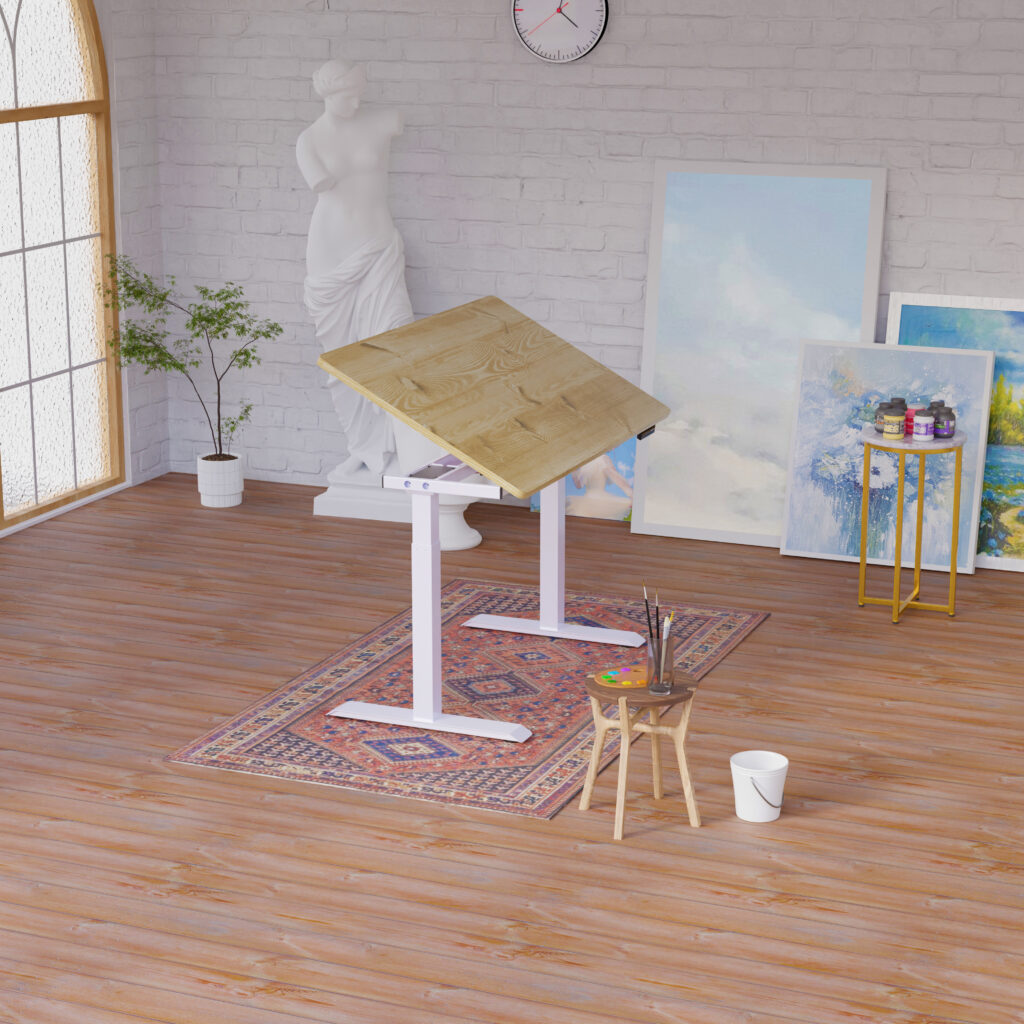
· Advantages of Dual Adjustment
By creating a work surface with both height and tilt adjustability, the Aoke Tilt-Adjustable Desk better accommodates diverse creative needs.
III. Aoke’s Tilt-Adjustable Desk Solution
“For visible health, Aoke goes beyond theory.”
—As a practitioner and advocate of healthy creative practices, let’s explore how these scientific recommendations are systematically implemented in the AK2QX-YDZF3:
- Electric height adjustment breaks static posture cycles (adjustment range: 640-1290mm);
- Quantified scales implement physiological recommendations (tilt range: 0-40°);
- Dual adjustments synchronize to match the optimal distance and angle between the body and the desk.
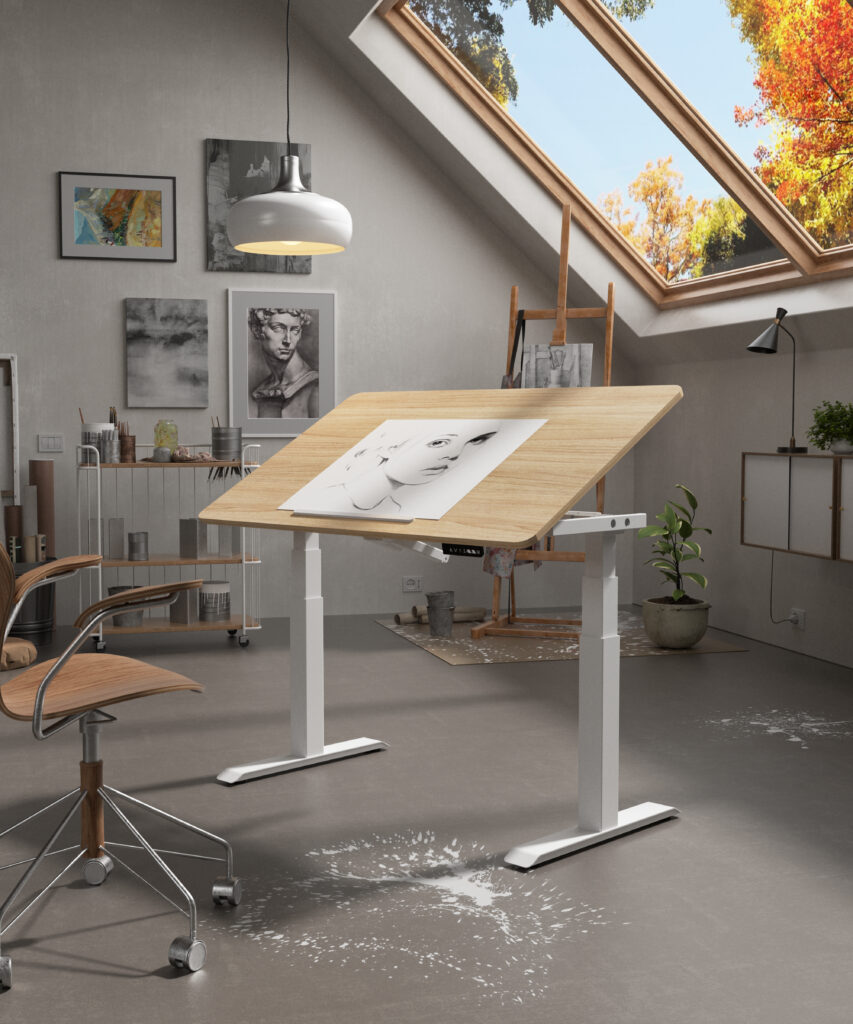
The hidden challenge of “posture maintenance” is solved one by one through Aoke’s engineering wisdom
—Every height adjustment and tilt of the AK2QX-YDZF3 is an active protection for the spine, eyes, and shoulders.
- Dual-Motor Drive System: Maintains a rated speed of 40mm/s, ensuring absolute stability at set angles;
- Magnetic Strip Design: Secures paper and tools, preventing slippage during tilted use, and sustaining optimized shoulder movement patterns;
- Height Memory Function: Simplifies one-handed operation for switching between optimal settings for different creative scenarios (e.g., sketching/coloring/digital work).

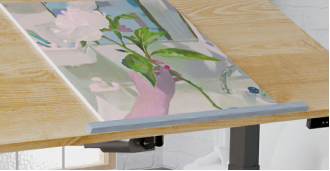
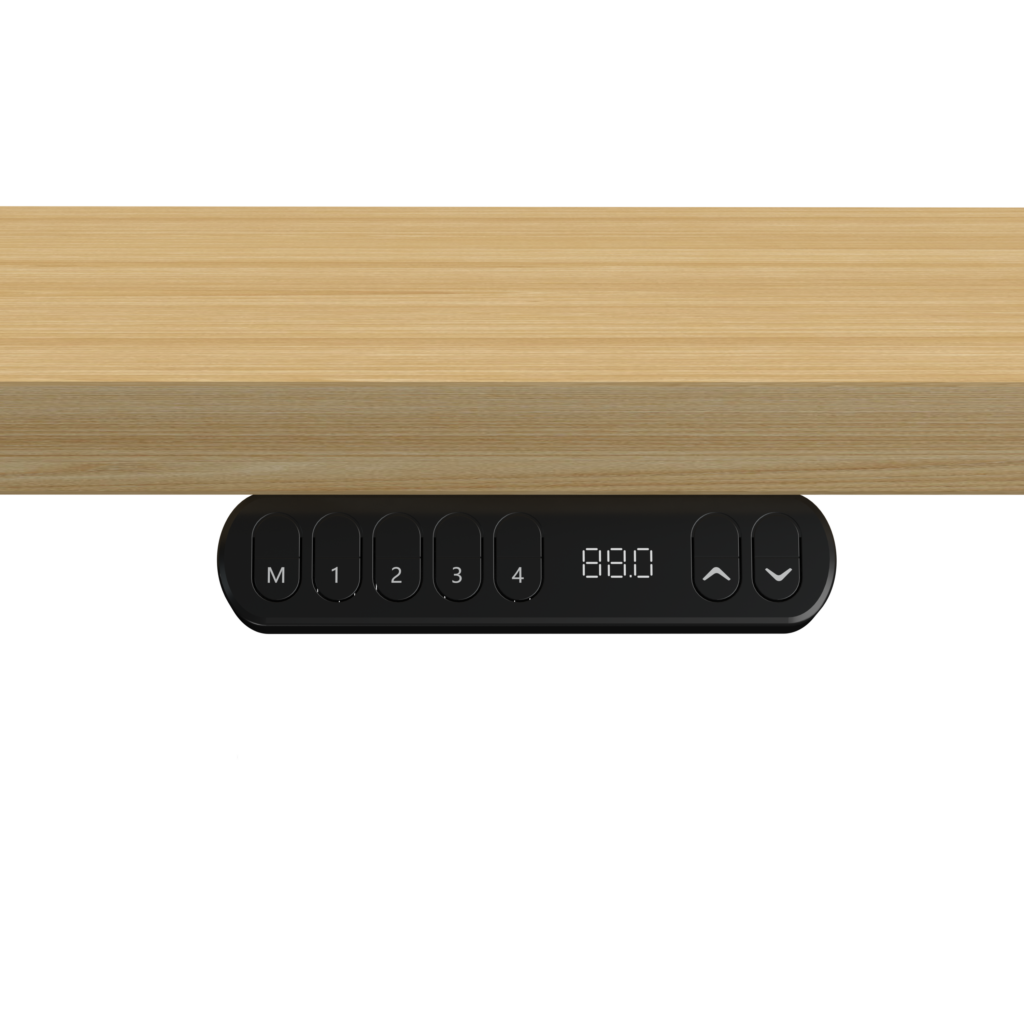
(When ordering the AK2QX-YDZF3, please consult customer service for specific controller models.)
PS: Creative Wellness Tips
Good tools should be paired with scientific habits. Here are two simple and effective wellness tips from Aoke:
1.Figure-4 Stretch:
Try this simple move during breaks: gently lean forward and hold for 15-30 seconds before switching sides. This stretch effectively relaxes the lower back and hip muscles.
https://www.onepeloton.com/blog/figure-4-stretch
2.The 20-8-2 Rule
Follow the “20-8-2” rhythm: sit for 20 minutes, stand for 8 minutes, and move for 2 minutes to keep your body in a healthy cycle.
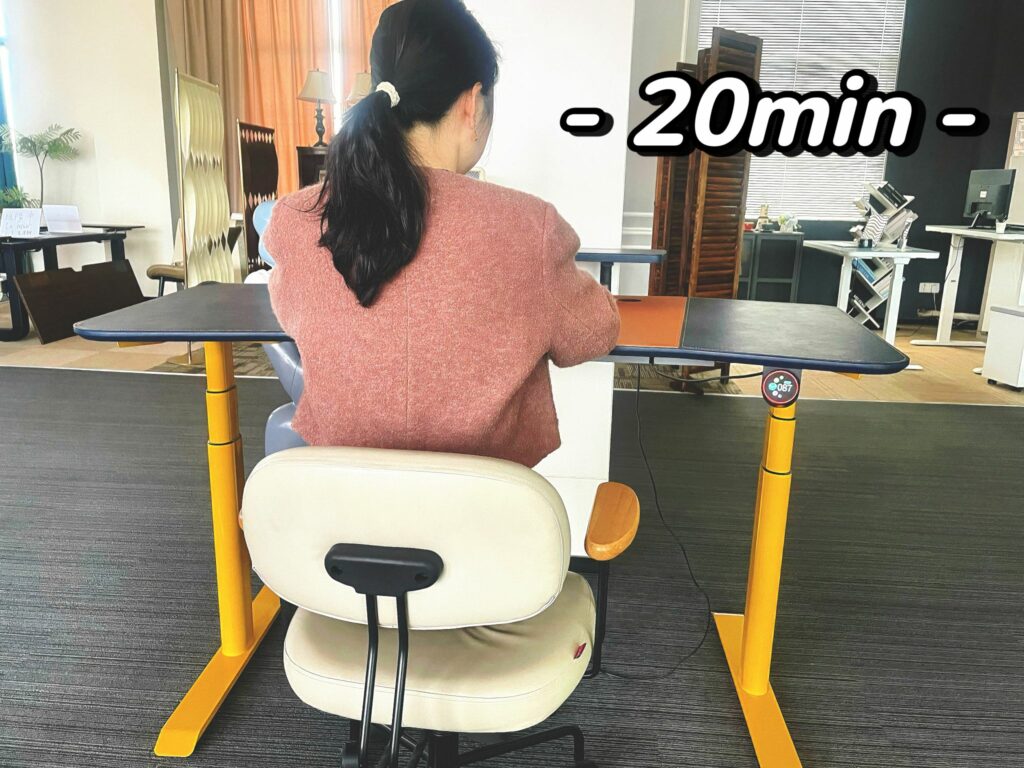
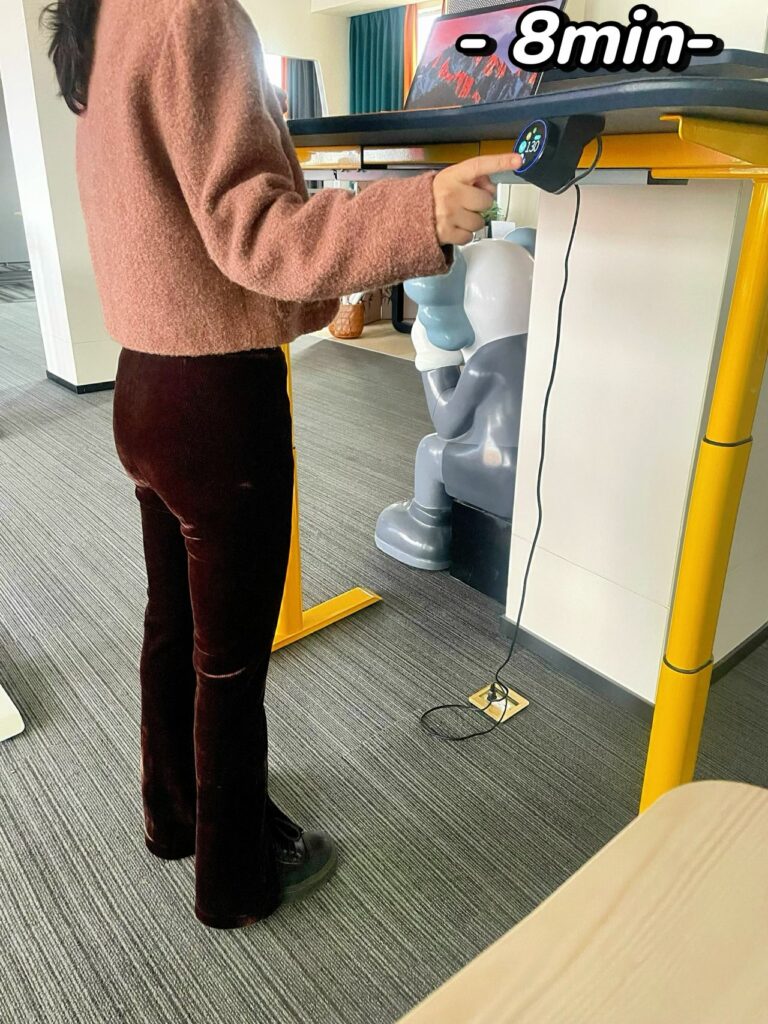
Conclusion:
Aoke—Making Every Desk Understand Your Needs.
True creative freedom stems from the scientific management of physical and mental well-being. Aoke not only provides professional ergonomic creative platforms but also advocates a “proactive wellness” work philosophy:
✓ Smart ergonomic devices prevent occupational injuries;
✓ Scientific habits enhance creative endurance;
✓ Systematic solutions safeguard artistic vitality.
Let every piece of work be born in comfort and health.
Aoke—Paying Tribute to the Vitality of Art with Technology.
